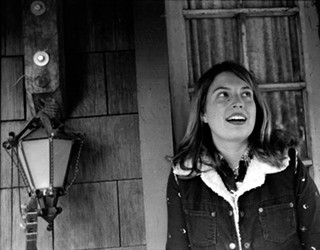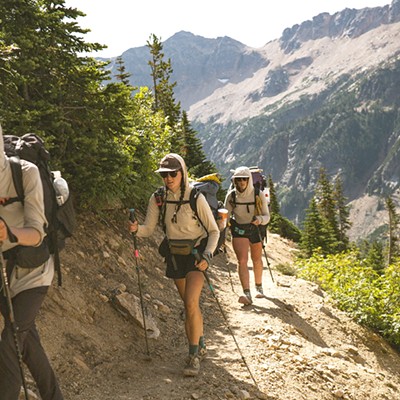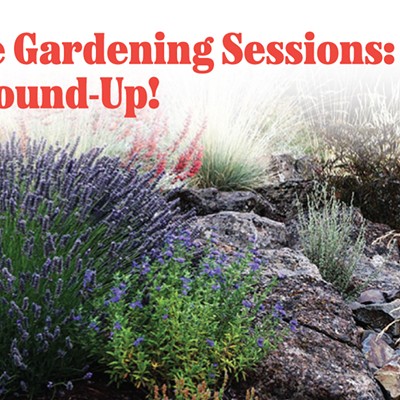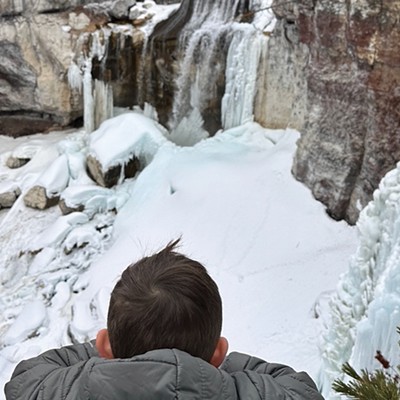Here is one possible scenario: Your avalanche "victim" is probably one of your best friends. You have less than fifteen minutes to find her with a spastic signal from a transceiver (a piece of equipment about as cumbersome as a Walkman). You then poke around a huge pile of snow with a stick that looks like a tent pole with the hope you will be able to tell the difference between a human poke and a piece of ice poke, and then dig like hell until you find her. Meanwhile you have just skied down the avalanche that she is under hoping to cover the range of the transceiver, and for whatever reason, just putting your shovel together in one piece has caused you to start to hyperventilate.
If you're lucky, there is a chance you would save your friend from suffocating under the snow. Better to avoid this situation altogether by getting educated about the signs of avalanche dangers and making good decisions about your choice of terrain while exploring the backcountry. Even seemingly innocuous and highly traveled slopes like Tumalo Mountain can slip.
"I've seen backcountry skiing increase in this region a lot over the last three years," said Gabe Chladek, President of the Oregon Avalanche Institute and Three Sisters Backcountry, which operates out of Sisters near Tam McArthur Rim. "It's booming in this region, but there has not been a lot of awareness about how that increased use also increases exposure to avalanche danger."
One way to educate yourself is a Level I Avalanche Course like the one I took this weekend taught by the Oregon Avalanche Institute. You'll gain a basic understanding of avalanches and acquire a framework for decision-making and risk management in avalanche terrain. You'll also learn a number of different skills such has how to use your avalanche equipment, as well as how to dig snow profile pits and how they can be used to make educated decisions.
It may be tempting to skip taking an avalanche class knowing that you will likely be surrounded by experts in the backcountry. However, that rationale overlooks the human factors that go into the decision- making process on any ski tour.
The section on human factors was one of the most important and relevant sections of the class. According to statistics, human factors account for about 90 percent of all avalanche deaths, and according to Chladek, they account for nearly 100 percent, because it is always a person who makes the decision to get into a dangerous situation.
Although there are many nuances to group dynamics, there are usually always varying degrees of ability levels. It might be difficult to admit that a particular slope is over your head, especially if you are new to the sport and grateful to your friends for letting you tag along. But remember, if you are in a protected wilderness area, and you are injured, you will have to be carried or dragged out by those same friends. The only time the Forest Service allows helicopters or snowmobiles onto these lands is if the situation is immediately life threatening.
There are all kinds of other factors that can lead to poor decisions in a group setting. One is simply the "powder fever" mentality. Someone may have been stuck in an office all week and, after a long slog up hill, they just want some fresh lines. Another is "summit fever," the focus on getting to the top no matter what. Another common one is the "guides day off" mentality, when a group of expert skiers want to take a day off from being responsible, and therefore take unnecessary risks.
Social factors can also come into play when you see another set of tracks up a slope and make the assumption that it is safe to ski. Our other instructor for the course, Jonas Tarlen, also works as a backcountry ski guide for Three Sisters Backcountry and relayed this cautionary tale.
One morning Tarlen led a group up a section of the Rim known as Orchard Bowl. Avalanche risk was low during that time of the day, and Tarlen made sure the group took all necessary precautions such as skinning in protected areas, and skiing down the open slope one at a time. Later that afternoon, the sun came out, warming the top layer of snow and causing it to coalesce and become heavier, increasing the danger for avalanches. He saw another group following the same tracks they had put down that morning.
"I'm sure the other group made the assumption that the slope was safe because they had seen a guided tour take the same route. I wondered, should I put up a sign to warn them about how much the conditions had changed in just a few hours?" Tarlen said.
Here in Central Oregon, we don't have an avalanche center, which makes it all the more important to become educated and learn from other skiers. One website, www.coavalanche.org, allows skiers to post their observations, but Chladek notes that there are all levels of ability and knowledge posting their thoughts and that it is important to have enough personal knowledge to make your own safe decisions.
As more and more skiers are choosing to spend their days many miles from the lift lines and chopped up trails of the resort, increased use has heightened the exposure to avalanche danger in the backcountry. Help strengthen the backcountry ski community in Central Oregon by taking an avalanche course and practicing your skills while you're out there. It could save a life.
The Gear
Special thanks to Pine Mountain Sports and Chris Bowman for providing me with AT gear for the course and explaining it all. Backcountry skiing might just top them all for the most gear intensive sport I've tried, to date.
· Tele-mark skis or split snowboards are also a great way to get out there.
· Boots: Look like alpine ski boots, but have a "walk" mode for climbing.
· Bindings: Allows you to unclip for climbing as well as having a riser so your heel doesn't come all the way down on steep spots.
· Adjustable polls: Nordic setting for climbing (armpit height), and downhill level for descents (arms parallel to the ground).
· Skis: Nice and wide for the fluffy stuff.
· Skins: Mohair or Nylon material that attaches to the bottom of skis and is secured with glue and clips. This helps you get up the hills, but also provides a lot of resistance on the flats.
· Transceiver: Can be used both for searching for others and allowing others to find you when used properly.
· Probe: Collapsible poll for poking holes in the snow to search for people.
· Shovel: Used to dig people out of avalanches as well as to dig profile pits.
· Backpacks: Many models out there to keep your gear organized, and some even include an "Avalung," which is a breathing system that could add a few hours onto your survival time, should you become buried.
· Helmet: Protect your head.
More info:
Oregon Avalanche Institute @ Three Sisters Backcountry
Central Oregon Community College Outdoor Leadership
Central Oregon Avalanche Association






















